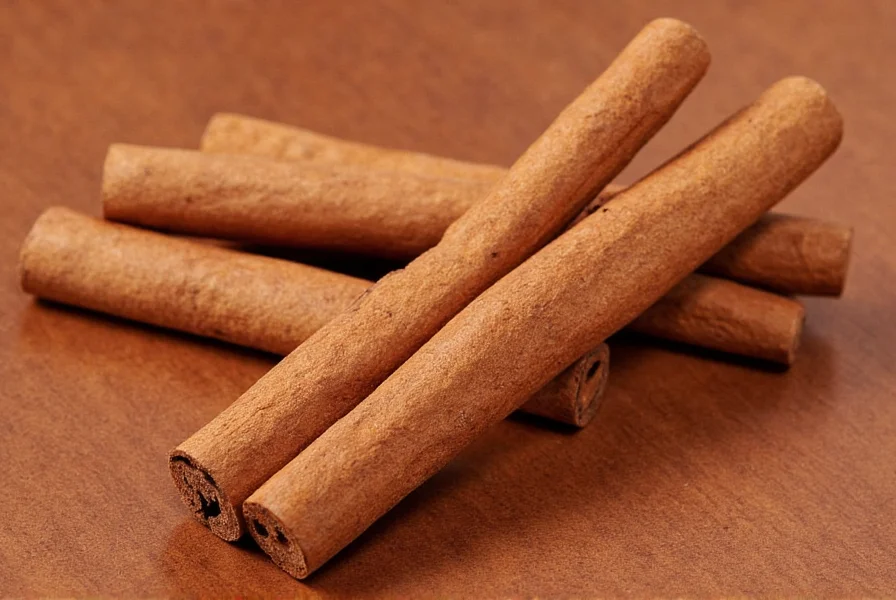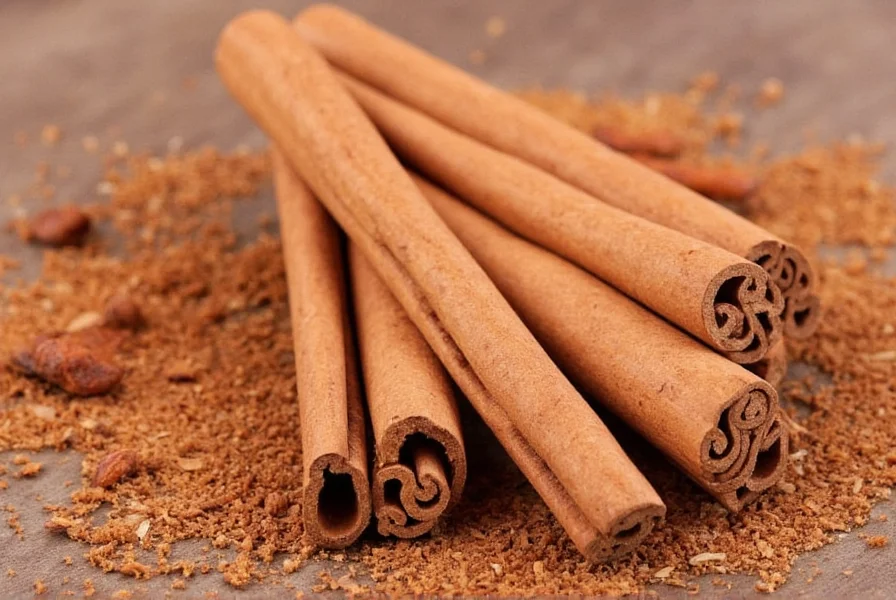Saigon cinnamon (Cinnamomum loureiroi) offers significant health benefits including blood sugar regulation, potent antioxidant properties, anti-inflammatory effects, and cardiovascular support. Its high cinnamaldehyde content (up to 25%) provides these benefits, though its elevated coumarin levels (approximately 6.97g/kg) require moderate consumption—limited to 0.5-1 gram daily for most adults—to avoid potential liver concerns.
Saigon cinnamon, scientifically known as Cinnamomum loureiroi, stands out among cinnamon varieties for its intense flavor and remarkable health properties. This Vietnamese native species, often labeled as Vietnamese cinnamon or quế trà my in its country of origin, contains higher concentrations of active compounds than its more common cousin, Ceylon cinnamon. Understanding saigon cinnamon health benefits requires examining both its therapeutic potential and important consumption considerations.
What Makes Saigon Cinnamon Unique
Originating from the mountainous regions of central Vietnam, Saigon cinnamon features thicker bark and a stronger aroma than other cinnamon types. The distinctive characteristics stem from its chemical composition:
| Cinnamon Type | Cinnamaldehyde Content | Coumarin Content | Flavor Profile |
|---|---|---|---|
| Saigon (C. loureiroi) | 20-25% | 6,000-12,000 mg/kg | Intense, sweet-spicy |
| Ceylon (C. verum) | 50-63% | 44-345 mg/kg | Milder, more delicate |
| Cassia (C. cassia) | 70-80% | 2,100-5,500 mg/kg | Strong, pungent |
The high cinnamaldehyde concentration gives Saigon cinnamon its powerful therapeutic properties, while the elevated coumarin levels necessitate mindful consumption. This balance defines the saigon cinnamon vs ceylon cinnamon benefits discussion that health-conscious consumers frequently encounter.
Science-Backed Health Benefits
Blood Sugar Regulation
Multiple studies demonstrate Saigon cinnamon's effectiveness in improving insulin sensitivity. Research published in the Journal of the American Board of Family Medicine found that just 1 gram of cinnamon daily significantly reduced fasting blood glucose levels in type 2 diabetes patients. The mechanism involves cinnamaldehyde's ability to mimic insulin and enhance glucose uptake by cells—a crucial consideration for those exploring saigon cinnamon blood sugar benefits.

Antioxidant Powerhouse
With an ORAC (Oxygen Radical Absorbance Capacity) value of approximately 267,536 μmol TE/100g, Saigon cinnamon ranks among nature's most potent antioxidant sources. These compounds combat oxidative stress that contributes to chronic diseases. A 2019 analysis in Antioxidants journal confirmed that cinnamon's polyphenols effectively neutralize free radicals, supporting cellular health and potentially slowing aging processes.
Anti-Inflammatory Effects
The cinnamaldehyde in Saigon cinnamon inhibits inflammatory pathways by suppressing NF-kB activation. This mechanism explains its traditional use for arthritis and muscle pain relief. Clinical research indicates regular consumption may reduce inflammatory markers like C-reactive protein, offering natural support for inflammatory conditions without pharmaceutical side effects.
Cardiovascular Protection
Studies show Saigon cinnamon helps maintain healthy cholesterol levels by reducing LDL ('bad') cholesterol while preserving HDL ('good') cholesterol. Its ability to lower triglycerides and blood pressure contributes to comprehensive cardiovascular support. The American Journal of Clinical Nutrition published findings that 3 grams daily significantly improved multiple heart disease risk factors in study participants.
Important Safety Considerations
While exploring scientific studies on saigon cinnamon benefits, the coumarin content requires attention. Coumarin, present in much higher concentrations in Saigon cinnamon than Ceylon varieties, can cause liver toxicity in sensitive individuals when consumed excessively. The European Food Safety Authority recommends a maximum daily intake of 0.1 mg coumarin per kilogram of body weight.
For an average 70 kg adult, this translates to approximately 0.5-1 gram of Saigon cinnamon daily. Those with liver conditions or taking medications metabolized by the liver should consult healthcare providers before regular consumption. This addresses the common query about how much saigon cinnamon is safe to consume.
Practical Usage Guidelines
To maximize benefits while minimizing risks:
- Use 1/2 to 1 teaspoon (0.5-1g) daily in cooking or beverages
- Rotate with Ceylon cinnamon for variety and reduced coumarin exposure
- Add to morning oatmeal, smoothies, or coffee for easy incorporation
- Combine with black pepper to enhance absorption of active compounds
- Avoid taking in concentrated supplement form without medical supervision
Unlike commercial cinnamon products that often blend varieties, authentic Saigon cinnamon comes from Vietnam and displays distinctive thick, tightly-rolled quills with a deep reddish-brown color. When shopping, look for products specifically labeled Cinnamomum loureiroi to ensure you're getting the genuine variety with its characteristic saigon cinnamon antioxidant properties.
Conclusion
Saigon cinnamon offers impressive health benefits supported by growing scientific evidence, particularly for blood sugar management, antioxidant protection, and inflammation reduction. Its potent composition requires mindful consumption to enjoy benefits while avoiding potential side effects from excessive coumarin intake. By understanding proper usage guidelines and incorporating it thoughtfully into your diet, you can harness the therapeutic potential of this remarkable spice. As with any dietary change, consult with a healthcare provider if you have specific health conditions or concerns.
What makes Saigon cinnamon different from other types?
Saigon cinnamon (Cinnamomum loureiroi) contains higher concentrations of cinnamaldehyde (20-25%) and coumarin (6,000-12,000 mg/kg) than other varieties, giving it a stronger flavor and more potent therapeutic effects but requiring more careful consumption due to the coumarin content.
How much Saigon cinnamon can I safely consume daily?
For most adults, the safe daily limit is 0.5-1 gram (approximately 1/4 to 1/2 teaspoon) due to its high coumarin content. Those with liver conditions should consult a healthcare provider before regular consumption.
Is Saigon cinnamon better than Ceylon for blood sugar control?
Both types show blood sugar benefits, but Saigon cinnamon's higher cinnamaldehyde content may provide stronger effects. However, Ceylon cinnamon's much lower coumarin levels make it safer for daily, long-term use, especially for those with diabetes requiring ongoing management.
Can I use Saigon cinnamon if I have liver concerns?
Individuals with liver conditions should exercise caution with Saigon cinnamon due to its high coumarin content, which can potentially cause liver toxicity in sensitive individuals when consumed in excess. Consult your healthcare provider before regular use.
How should I store Saigon cinnamon to maintain potency?
Store Saigon cinnamon in an airtight container away from light and heat. Ground cinnamon retains potency for 6-12 months, while whole sticks maintain freshness for 2-3 years. Proper storage preserves the volatile oils responsible for both flavor and health benefits.











 浙公网安备
33010002000092号
浙公网安备
33010002000092号 浙B2-20120091-4
浙B2-20120091-4